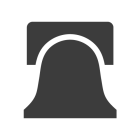The attached chart produces clear evidence of the need for reality-based scoring. It shows that the estimators were consistently wrong, and often by more than 100 percent.
The estimators wrongly forecasted that people's behavior would not change when there were changes in the capital gains tax laws.
The 1986 tax reforms put in place a significant increase in capital gains taxes starting in 1987. So the chart below shows that many people were selling in 1986 before the higher taxes would become law. The estimators wrongly assumed that the higher tax rates would increase revenue.
In 1997, capital gains tax rates were reduced. Estimators, using
the failed "static model" forecasted a drop in revenue. Again, they
were wrong. The tax rates went down, actual capital gains tax
revenue skyrocketed.
Not only is the current "static model" bad; it's bad year after
year after year. It's time to switch to a reality-based scoring
model.





